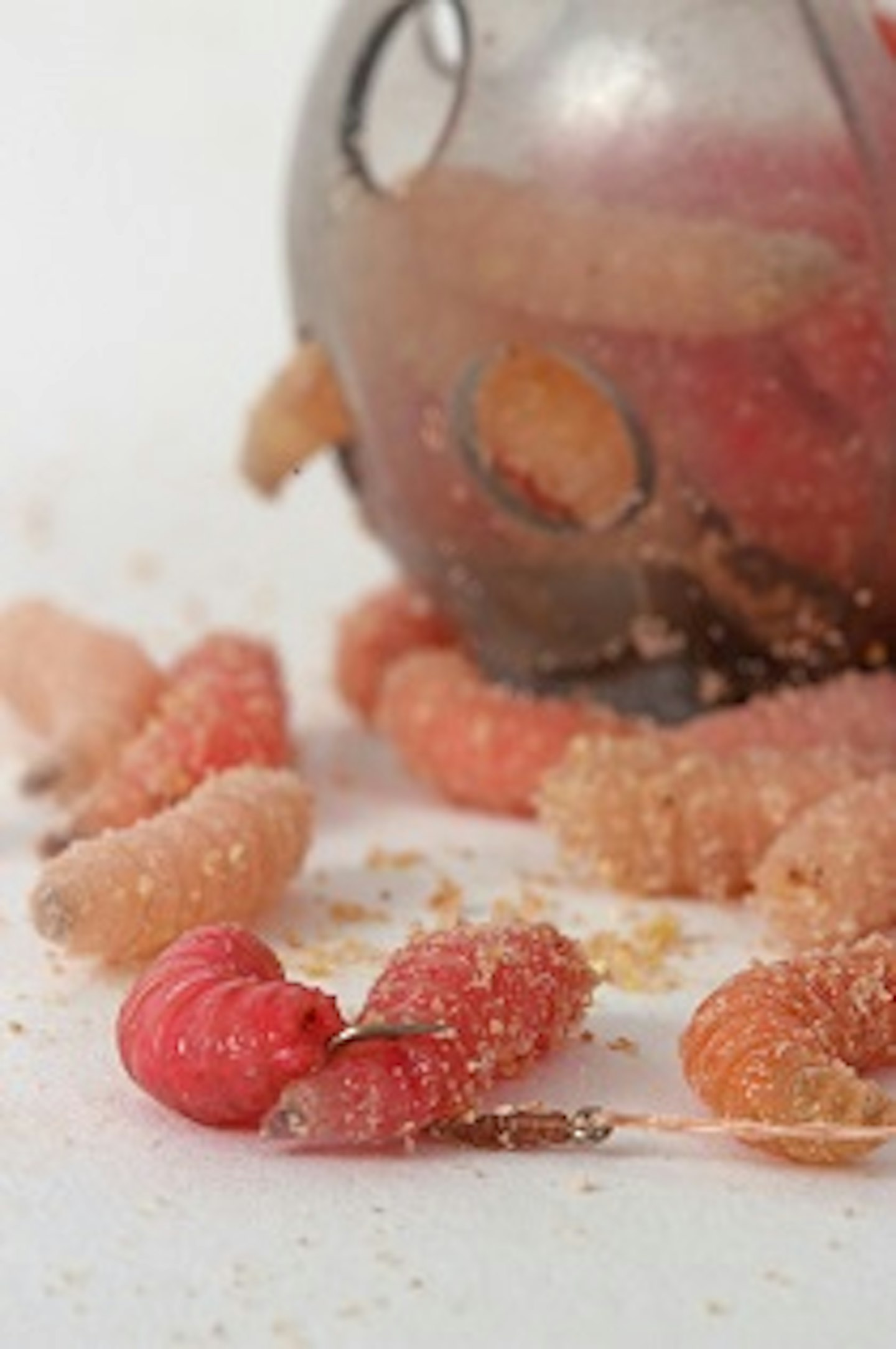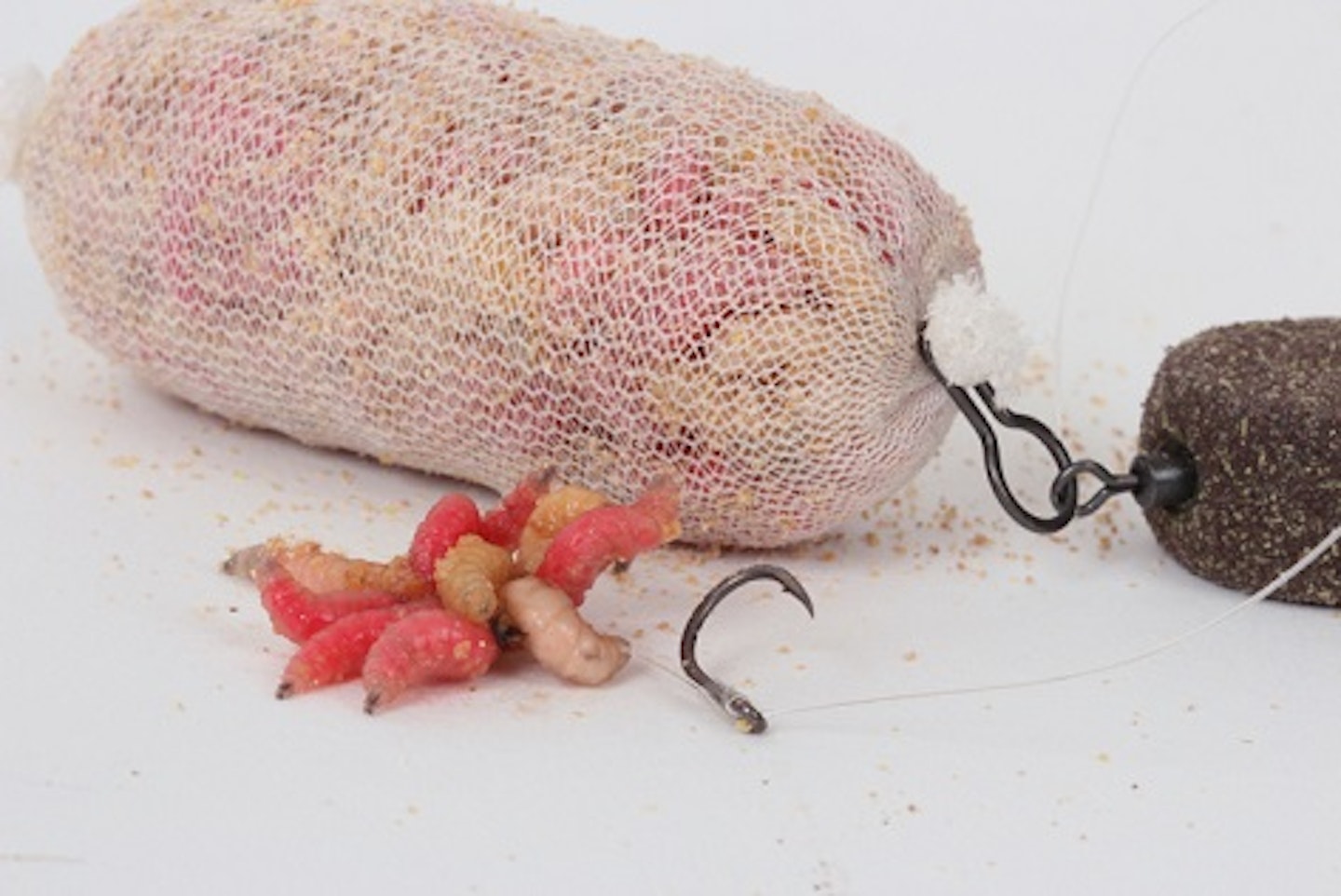Amid the massive array of baits available today, some are genuine ‘all-rounders’. Top of the list has to be the maggot.
Because maggots will attract fish of all sizes they can be a pain in the warmer months, but as life slows down in the winter and the small species become less active, grubs start to become a viable bait for so-called ‘specimen’ fish.
.jpg?auto=format&w=1440&q=80)
The best carp I’ve caught on double maggot was a 24-pounder, taken on a January morning while roach fishing. I’ve had loads of big carp on grubs, intentionally or otherwise. The key, though, is to find ways to fish with maggots on gear strong enough to land powerful fish –carp, barbel, chub or even tench.
Of course, you could just cram a big bunch of maggots on to the hook, maybe a dozen on a size 8.
This does work, but it has several disadvantages. There is a good chance that the hookpoint could be masked by the bait, leading to missed bites, and maggots are likely to be damaged when you hook them on. Even a big bunch is no deterrent to a determined small roach or minnow that will nibble away at the bait.
I tend to fish maggots on a hair rig, and there are several ways you can do this, also incorporating artificial maggots to ensure you always have a ‘small fish-resistant’ bait out there.
For each species I adapt the way I fish maggots to maximise my chances, based upon how the fish naturally feed and their tolerance of a big bait.
The bigger the bait, the better, as it is easier to find, but this is not always something the fish will tolerate. Here are my favourite ways to target a trio of winter species with maggots.
CHUB

Chub will take big bunches of maggots, especially after dark, but I find that the smaller the bait, the more success I get when maggot fishing during daylight.
Chub have excellent eyesight, among the best of all coarse fish, and are easily able to suss out a bait that isn’t behaving naturally – and will leave it well alone.
When the chub are feeding confidently, two or three maggots on strong size 16 hook is ideal.
To counteract the weight of the hook I put a handful of maggots in just enough water to half cover them and leave them for about 30 minutes. By then the maggots will have swollen up slightly and have an air bubble inside that makes them float. These floating maggots are kept just for the hook.
I was once happy using a 4lb nylon hooklength for chub fishing with maggots, but as the fish got bigger over the years I started to find this wasn’t up to the job, so recently I have swapped to 7lb braid. I find that this resembles a strand of weed and does not seem to put the chub off.
When the going gets really tough I will scale down to a size 18 hook carrying just a single maggot, and often this tiny bait will bring the biggest chub of the day.
As for feeding, I like to introduce the bait through a standard blockend swimfeeder of around 30g-50g that will deposit all the maggots close to the hookbait.
I also like to recast about every 10 minutes or so to keep a steady stream of loosefeed going in.
BARBEL
Barbel are not the most finicky of species, but it still pays to use a fairly subtle maggot approach.
I have caught quite a lot of barbel by fishing big bunches of maggots on the hook, or by threading a dozen on to a piece of cotton thread and tying this to the hook, but I reckon that it is equally as effective, and far easier, to just use three or four maggots on a size 12 or 14 extra strong hook, along with a floating artificial maggot fished on the hair. This rig is dead simple to tie and works a treat, as long as the small fish are not too active.
I never fish for barbel with light tackle, so the hooklength is made from 10lb fluorocarbon and the hook is tied on with a knotless knot to form a stiff hair. I then thread the artificial maggot on to the hair and superglue it in place just below the bend of the hook. The artificial helps balance the weight of the hook and even if the real maggots are picked off by small fish there will still be a bait in the swim.

I then just put a few real maggots on the hook. Don’t be tempted to add too many – it doesn’t seem to make a difference to the barbel, but it could stop you from getting a good hookhold. The more confidently you can get barbel feeding, the easier they are to catch, so keep a steady stream of maggots going in via a large (up to 2.5oz) blockend feeder.
I really cram the maggots into the feeder as this slows down their escape slightly, so I can leave the feeder out for about 20 minutes between casts.
CARP
I like to use a decent number of maggots on the hook when I’m targeting winter carp – anything from about six to 20 maggots is about right – and you will be quite surprised at just what this quite large bait will turn up in the way of other species too!

By far the easiest way to fish a big bunch of maggots is on a maggot clip, and I carry several different sizes of this useful little device so that I can match one, and the hook size, precisely to the number of maggots I am using.
For example, when just half-a-dozen maggots are going on to the hair I will go down to a size 12 hook and the smallest clip in my repertoire, while with 20 maggots a medium-sized clip and a size 8 hook are about right.
The buoyancy of the bait is once again very important – you want to make it as easy for the carp to suck up the grubs as possible.
It doesn’t take a lot for the fish to hoover up the free offerings, so a slow-sinking bait is more likely to be taken in – carp very often spend time in the upper and middle layers of water in colder weather. As such, I add small slivers of rig foam to the maggot clip between the maggots to add buoyancy.
Clips are a little bit prone to tangling, so I tend to use a stiff hooklength made from 10lb-15lb fluorocarbon and fish with the hair quite short.
I dispense with the feeder when carp fishing and normally attach a PVA bag of maggots to the rig instead. I find this will break down, leaving a nice patch of maggots on the lakebed.
